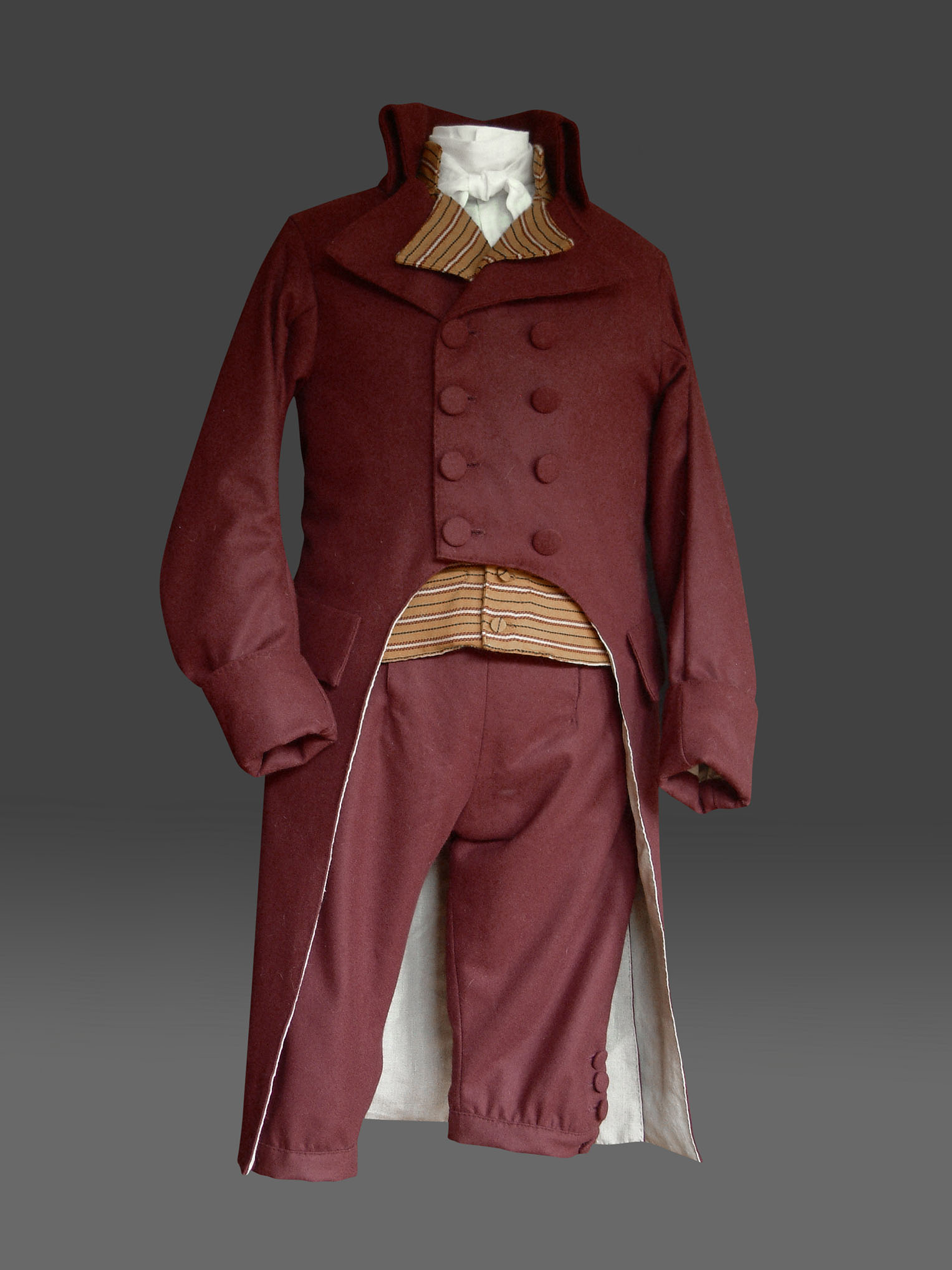Historical dresses from the Regency and Biedermeier periods, individually commissioned for museum exhibitions or historic al weddings.
The historical wedding dresses and exhibition pieces are made of high-quality silk fabrics, cotton tulle or cotton mousseline. Some of them are decorated with embroidery and antique cotton lace.
Regency fashion
1805 - 1820
The Regency dresses or chemise dresses at the beginning of the 19th century are hard to beat in terms of simplicity. The style of dress à la greque, based on Greek antiquity, dominated fashion: straight-cut dresses made of thin cotton, gathered and gathered under the bust, sometimes without sleeves. Only gradually did dresses in the Regency era become more elaborate again. The waistline, which was pushed upwards, and the large neckline remained. The train was added again. Ladies sometimes wore a spencer jacket or a manteau, often made of silk and frequently embroidered, with the light dresses without protection from the weather.
In men's fashion, England set the tone, with the gentleman wearing a simple tailcoat with waistcoat; the length of the trousers varied.
>> read more
Biedermeier fashion
1820 - 1840
The transition from Empire to Biedermeier fashion is smooth. The waistline of dresses moved back to its natural position. Skirts gradually begin to widen towards the hem and are finally pleated at the waist. They are significantly shorter than in previous eras. The sleeves also widened and reached enormous proportions in the 1830s, making the waist appear particularly slim. In general, the ideal is once again a slim waist and a corset is again part of the wardrobe for this purpose.
For men, the tailcoat, which was also part of daywear, was retained in the Biedermeier period. Its sleeves are greatly flared at the top. Here, too, the slim waist was emphasised, which is why men also sometimes wore corsets. The trousers - pantaloons - are now always floor-length and sometimes have a stirrup that runs under the sole of the shoe.
>> read more
✕












